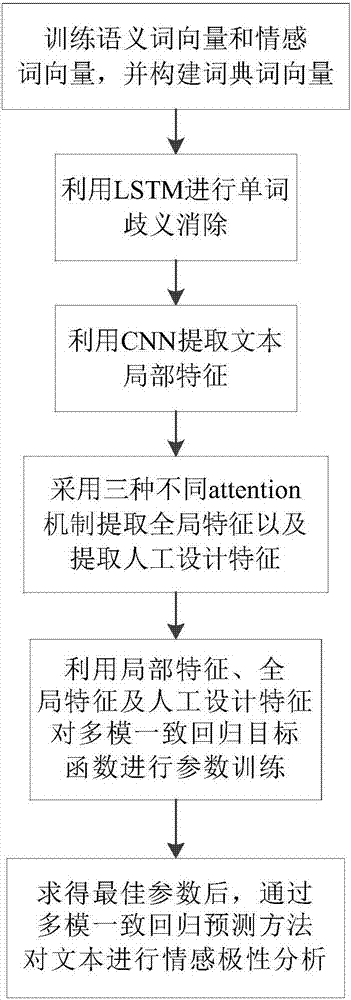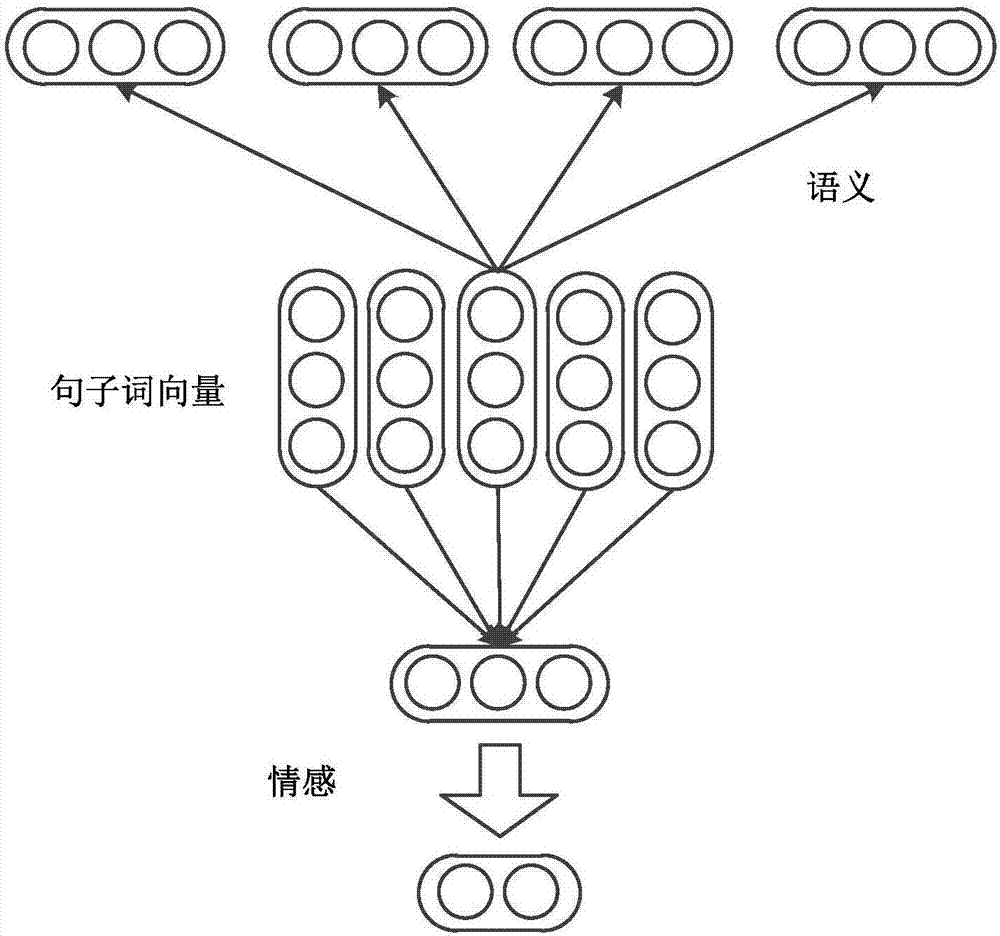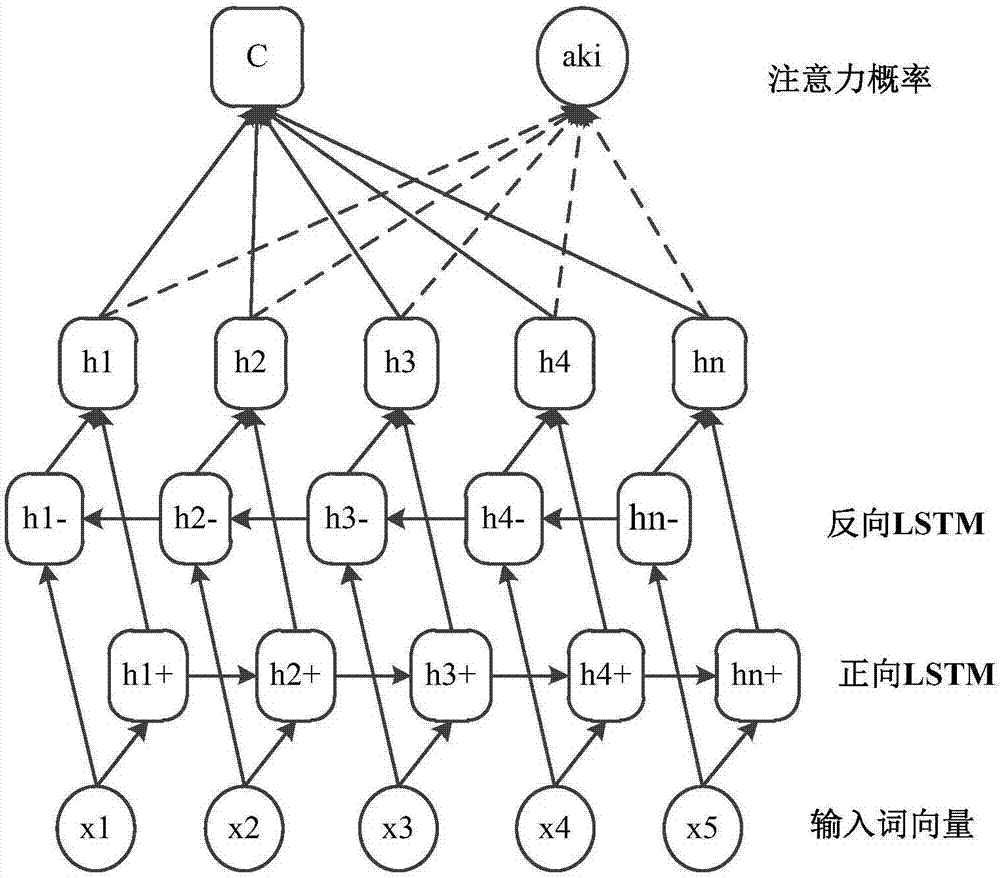attention CNNs and CCR-based text sentiment analysis method
A sentiment analysis and text technology, applied in semantic analysis, neural learning methods, special data processing applications, etc., can solve problems such as single feature, lack of global features, and insufficient to reflect the emotional polarity of text
- Summary
- Abstract
- Description
- Claims
- Application Information
AI Technical Summary
Problems solved by technology
Method used
Image
Examples
Embodiment Construction
[0042] The method of the present invention comprises the following steps: 1. Utilize original text data to train semantic word vectors and emotional word vectors and utilize the sentiment dictionary collected to carry out dictionary word vector construction; 2. Utilize the context semantics of long short-term memory network LSTM to capture words for ambiguity Elimination; 3. Using convolutional neural network (combining convolution kernels with different filter lengths to extract local features of the text; 4. Using three different attention mechanisms to extract global features respectively; 5. Extracting artificial features from the original text data 6. Utilize local features, global features and artificial features to train the multi-mode consistent regression objective function; 7. Utilize the multi-mode consistent regression prediction method to carry out emotional polarity prediction. The present invention is relative to adopting single word vector or only extracting text...
PUM
 Login to View More
Login to View More Abstract
Description
Claims
Application Information
 Login to View More
Login to View More - R&D
- Intellectual Property
- Life Sciences
- Materials
- Tech Scout
- Unparalleled Data Quality
- Higher Quality Content
- 60% Fewer Hallucinations
Browse by: Latest US Patents, China's latest patents, Technical Efficacy Thesaurus, Application Domain, Technology Topic, Popular Technical Reports.
© 2025 PatSnap. All rights reserved.Legal|Privacy policy|Modern Slavery Act Transparency Statement|Sitemap|About US| Contact US: help@patsnap.com



